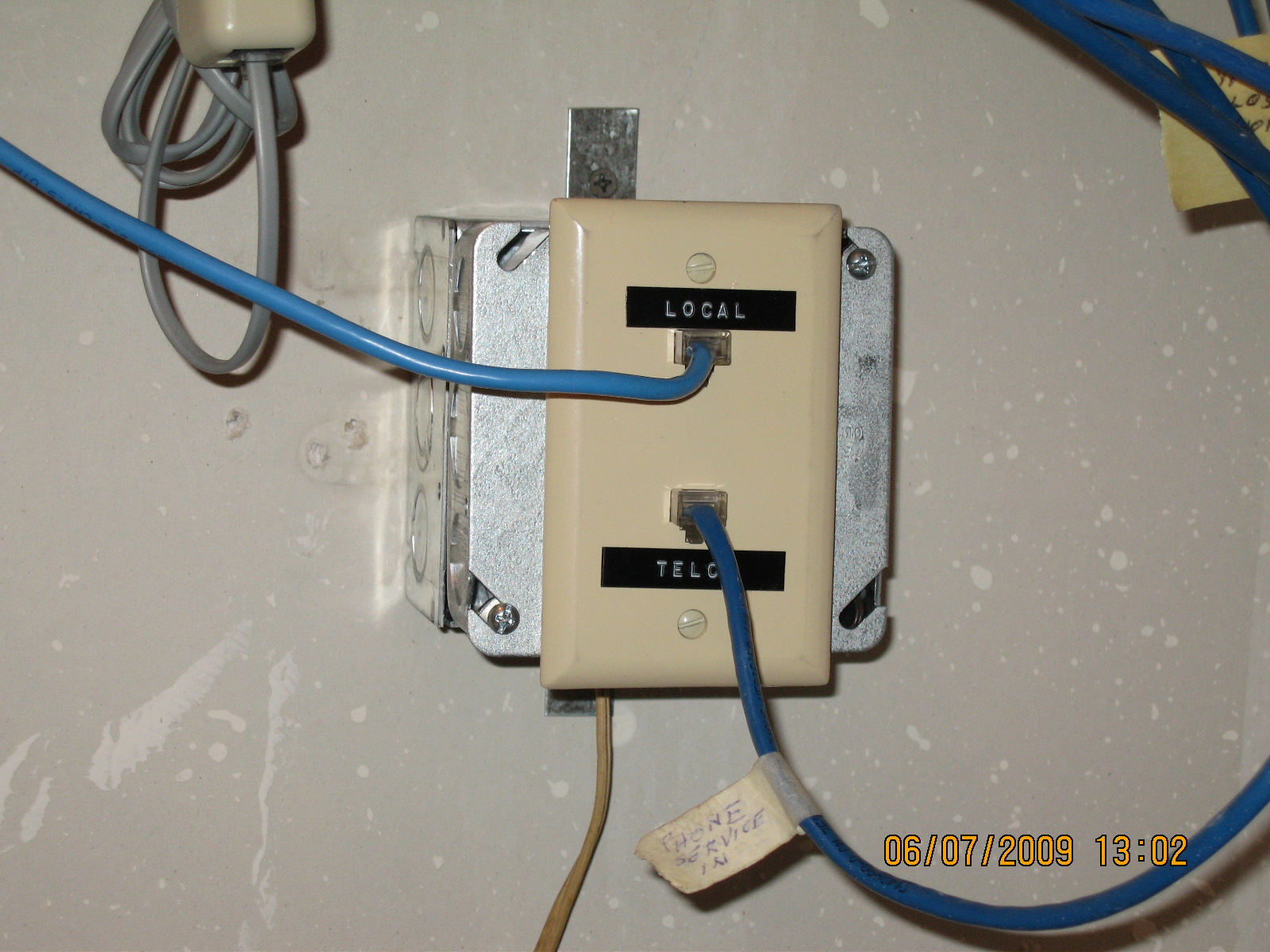| |
Arduino Whole House Telephone Intercom
Installing the Intercom
The intercom has two connectors. One is labeled "Telco", the other "Local". Identify a good place to cut your existing
telephone line so as to connect the incoming line to the Telco connector, and
the premises wiring to the Local connector.
Then plug the intercom into household power. Thereafter, all telephone instruments connected to the Local side
will participate in the intercom function.
Intercom Installed in Phone Wiring Closet - click to enlarge

|
If you are not sure where to break in to your telephone
line, a good place to look is at the junction box where Telco wiring is
connected to premises wiring. At our
house, this is on an exterior wall. You
could connect the intercom right there, but an internal location is more
convenient. Trace the premises wiring
to a convenient place.
We keep one telephone instrument, our answering machine,
connected to the Telco side of the line.
Thus, the answering machine can pick up an incoming call even if we are
talking on the intercom at the time.
If multiple telephone lines enter your premises, the
intercom can be installed on just one.
At our house, that is our main voice number. All lines typically run in a single cable. Our cable has four lines. Each individual telephone line comprises two
physical wires, bundled within the cable as a twisted pair. You only need to cut into the pair that will
connect to the intercom. However, I
found it convenient to terminate all four pairs from each side in a modular
plug. Inside the intercom, the
non-intercom pairs are wired straight through from the Telco jack to the Local
jack. If you want to take the
intercom out of service, it is easy to reconnect all phone lines via a
straight-through coupler.
In modular 8-pin connectors, telephone "line 1" (of four) is
conventionally connected to pins 4 and 5, the "middle" two pins. Line 2 connects to pins 3 and 6, just
outside the middle pins. Line 3
connects to pins 1 and 2, and line 4 connects to pins 7 and 8.
Intercom Only Installation: It is possible to create an intercom system only, with no
connection to an external telephone line.
For this configuration, connect the internal telephone line power supply
to the hot side of the Telco connector.
CAUTION: Do not attempt to connect an external Telco line when the
internal power supply is connected in this way! Software attempts to sense the presence
of a power supply jumper, and avoid activating the Hold relay (K2, see
circuit description,) or entering Intercom/Hold
mode when a jumper is present.
Activating K2 and applying ringing voltage would burn out the
hold resistor, R12. For an intercom only
system, you can leave out K2, the hold resistor, and the telco voltage sensing
resistors altogether.
| |